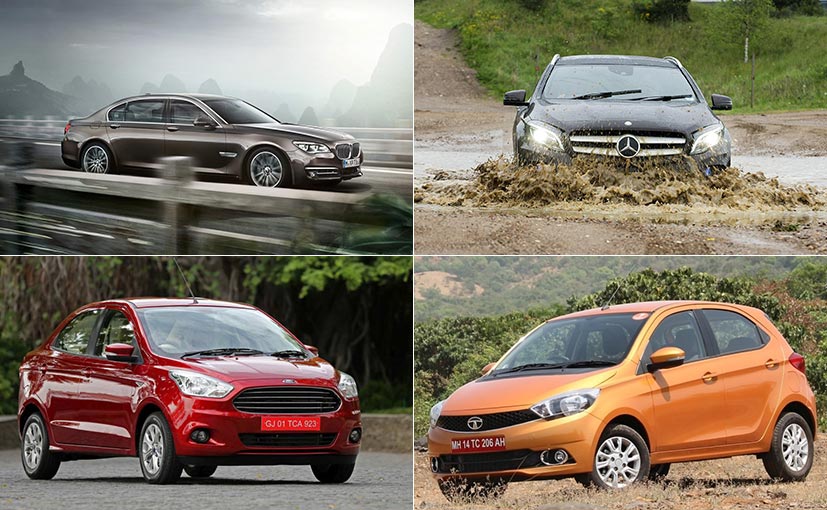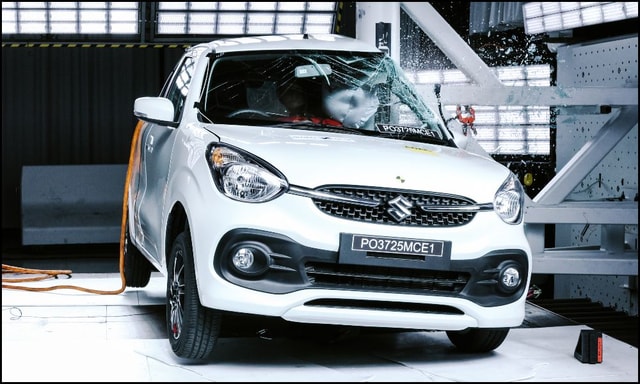GST On Cars To Be Fixed At 28% But Luxury Cars To Attract Additional Cess

- The GST rate for all passenger vehicles has been fixed at 28 per cent
- Luxury cars will have a further cess imposed
- However, the Finance Minister is yet to quantify or define this cess
The FM has neither quantified nor defined this cess as of now - but has indicated that it will take all current cesses and special taxes into account. And yet he promises that it would like still keep the tax on luxury cars under 40%. Further he has added that there may be a form of incentive worked out for the smaller, fuel efficient cars - to give them a further benefit to being included in the 28 per cent GST slab.
Abdul Majeed, Partner in the Automotive Practice at Price Waterhouse says, "Since most cities are choked and there is a strong demand for decongestion. And also from the growing environmental requirement to reduce emissions, a further incentive to promote the sale of small cars is likely."
Sources at one of India's largest carmakers say they believe this indicates car price will effectively stay the same as they are today. They also point out that the further incentives may well be reserved only for environmentally friendly small cars like hybrids or electrics. Majeed adds, "A further incentive is very likely for hybrid or electric cars. It is something the government will have to consider, and many other countries have followed this model too."
But that clarity will only come in a few weeks, as we get closer to the April 1 deadline. The Society of India Automobile Manufacturers or SIAM has already suggested a 2 slab approach to this issue - since many members have been worried about the taxation gap between smaller and larger cars shrinking. But it seems the government has consensus on a uniform rate but with the caveats I have spoken of above. It is wait and watch now - as the auto industry will also seek clarity on how the government chooses to define small and big cars. Will it stay with the current definition that creates a 4 metre divide or will it opt for price tags/engine displacements as the barometer is something the government needs to clear before the new regime can set in.
Trending News
 3 mins readWill The Kawasaki W230 Be Launched In India?
3 mins readWill The Kawasaki W230 Be Launched In India?
Latest News
 car&bike Team | Dec 23, 2025India Bike Week 2025 In Pictures: Highlights From Edition 12The 12th Edition of IBW was held on December 19 and 20, and if you missed this year’s festival, here is a recap of all that happened.3 mins read
car&bike Team | Dec 23, 2025India Bike Week 2025 In Pictures: Highlights From Edition 12The 12th Edition of IBW was held on December 19 and 20, and if you missed this year’s festival, here is a recap of all that happened.3 mins read Amaan Ahmed | Dec 23, 2025Tata To Enter Rs 40 Lakh Passenger Car Market With First Avinya Electric SUV In End-2026Set to be one of three EV launches from Tata Motors next year, the first in the Avinya series of electric vehicles will catapult the Pune-based carmaker into uncharted market territory, as it will be the most expensive Tata yet.1 min read
Amaan Ahmed | Dec 23, 2025Tata To Enter Rs 40 Lakh Passenger Car Market With First Avinya Electric SUV In End-2026Set to be one of three EV launches from Tata Motors next year, the first in the Avinya series of electric vehicles will catapult the Pune-based carmaker into uncharted market territory, as it will be the most expensive Tata yet.1 min read car&bike Team | Dec 23, 2025Will The Kawasaki W230 Be Launched In India?Kawasaki India has teased the W230 on its Instagram handle, indicating that the Kawasaki W230 may be in consideration for a launch in India.3 mins read
car&bike Team | Dec 23, 2025Will The Kawasaki W230 Be Launched In India?Kawasaki India has teased the W230 on its Instagram handle, indicating that the Kawasaki W230 may be in consideration for a launch in India.3 mins read Jaiveer Mehra | Dec 23, 2025Suzuki Fronx Secures One Star Safety Rating In ANCAP Crash Tests As Rear Seatbelt Fails During TestingThe Fronx scored less than 50 per cent points in both, adult and child occupant protection categories.1 min read
Jaiveer Mehra | Dec 23, 2025Suzuki Fronx Secures One Star Safety Rating In ANCAP Crash Tests As Rear Seatbelt Fails During TestingThe Fronx scored less than 50 per cent points in both, adult and child occupant protection categories.1 min read car&bike Team | Dec 23, 2025Final Jaguar F-Pace Rolls Of The Line: Production EndsThe Jaguar F-Pace marks the end of the brand’s internal combustion lineup, as the final model rolls off the line.2 mins read
car&bike Team | Dec 23, 2025Final Jaguar F-Pace Rolls Of The Line: Production EndsThe Jaguar F-Pace marks the end of the brand’s internal combustion lineup, as the final model rolls off the line.2 mins read car&bike Team | Dec 22, 2025Maruti Suzuki Celerio Secures Three-Star Rating In Global NCAP Crash TestsSix airbags-equipped model secured a three-star adult and two-star child occupant protection rating; the dual airbag model scored a two-star rating.3 mins read
car&bike Team | Dec 22, 2025Maruti Suzuki Celerio Secures Three-Star Rating In Global NCAP Crash TestsSix airbags-equipped model secured a three-star adult and two-star child occupant protection rating; the dual airbag model scored a two-star rating.3 mins read
 Seshan Vijayraghvan | Dec 23, 20252026 Kia Seltos Review: Formula Is Spot On, But Is The Timing Right?The 2nd-gen Kia Seltos has arrived, but it has the challenge of facing strong rivals like the Victoris and Sierra. The question is simple - Does it still have what it takes?9 mins read
Seshan Vijayraghvan | Dec 23, 20252026 Kia Seltos Review: Formula Is Spot On, But Is The Timing Right?The 2nd-gen Kia Seltos has arrived, but it has the challenge of facing strong rivals like the Victoris and Sierra. The question is simple - Does it still have what it takes?9 mins read Seshan Vijayraghvan | Dec 22, 20252026 Tata Harrier & Safari 1.5 Hyperion Review: By The Power Of Petrol!The new Tata Harrier and Safari petrol packs a new 1.5-litre TGDI Hyperion engine, but is it an ideal alternative to the diesel version?7 mins read
Seshan Vijayraghvan | Dec 22, 20252026 Tata Harrier & Safari 1.5 Hyperion Review: By The Power Of Petrol!The new Tata Harrier and Safari petrol packs a new 1.5-litre TGDI Hyperion engine, but is it an ideal alternative to the diesel version?7 mins read Bilal Firfiray | Dec 19, 2025Maruti Suzuki e-Vitara Review: Worth The Wait?After a long wait, the first-ever electric Maruti Suzuki is here. It’s the e-Vitara, and it comes with a few promises. But arriving this late, is it worth the wait? Or is it a case of too little, too late?9 mins read
Bilal Firfiray | Dec 19, 2025Maruti Suzuki e-Vitara Review: Worth The Wait?After a long wait, the first-ever electric Maruti Suzuki is here. It’s the e-Vitara, and it comes with a few promises. But arriving this late, is it worth the wait? Or is it a case of too little, too late?9 mins read Bilal Firfiray | Dec 18, 2025Mercedes-Benz G450d: The Subtle Power of EvolutionThe Mercedes-Benz G 450d evolves subtly with more power, improved efficiency, and modern tech, while staying true to the timeless G-Class design. And character.4 mins read
Bilal Firfiray | Dec 18, 2025Mercedes-Benz G450d: The Subtle Power of EvolutionThe Mercedes-Benz G 450d evolves subtly with more power, improved efficiency, and modern tech, while staying true to the timeless G-Class design. And character.4 mins read Janak Sorap | Dec 11, 2025Harley-Davidson X440 T First Ride Review: Smarter and SharperHarley-Davidson has taken the X440 and given it a more focused and engaging twist. The result is the X440 T—essentially the same platform but updated in areas that give the motorcycle more appeal and riders more thrill.5 mins read
Janak Sorap | Dec 11, 2025Harley-Davidson X440 T First Ride Review: Smarter and SharperHarley-Davidson has taken the X440 and given it a more focused and engaging twist. The result is the X440 T—essentially the same platform but updated in areas that give the motorcycle more appeal and riders more thrill.5 mins read































































































































